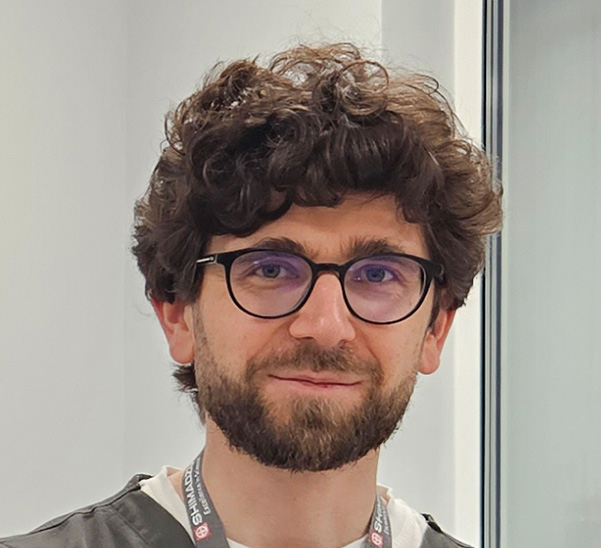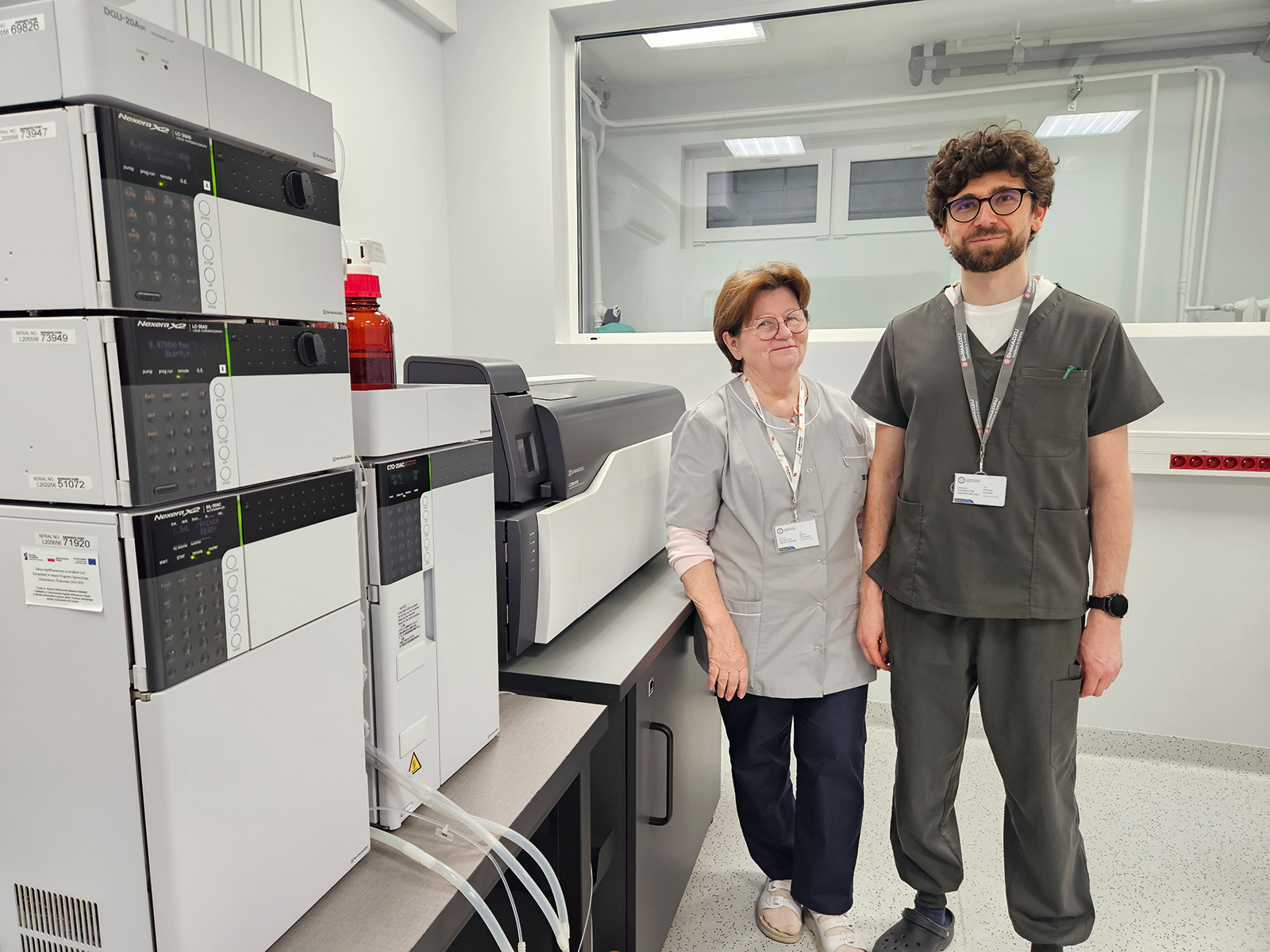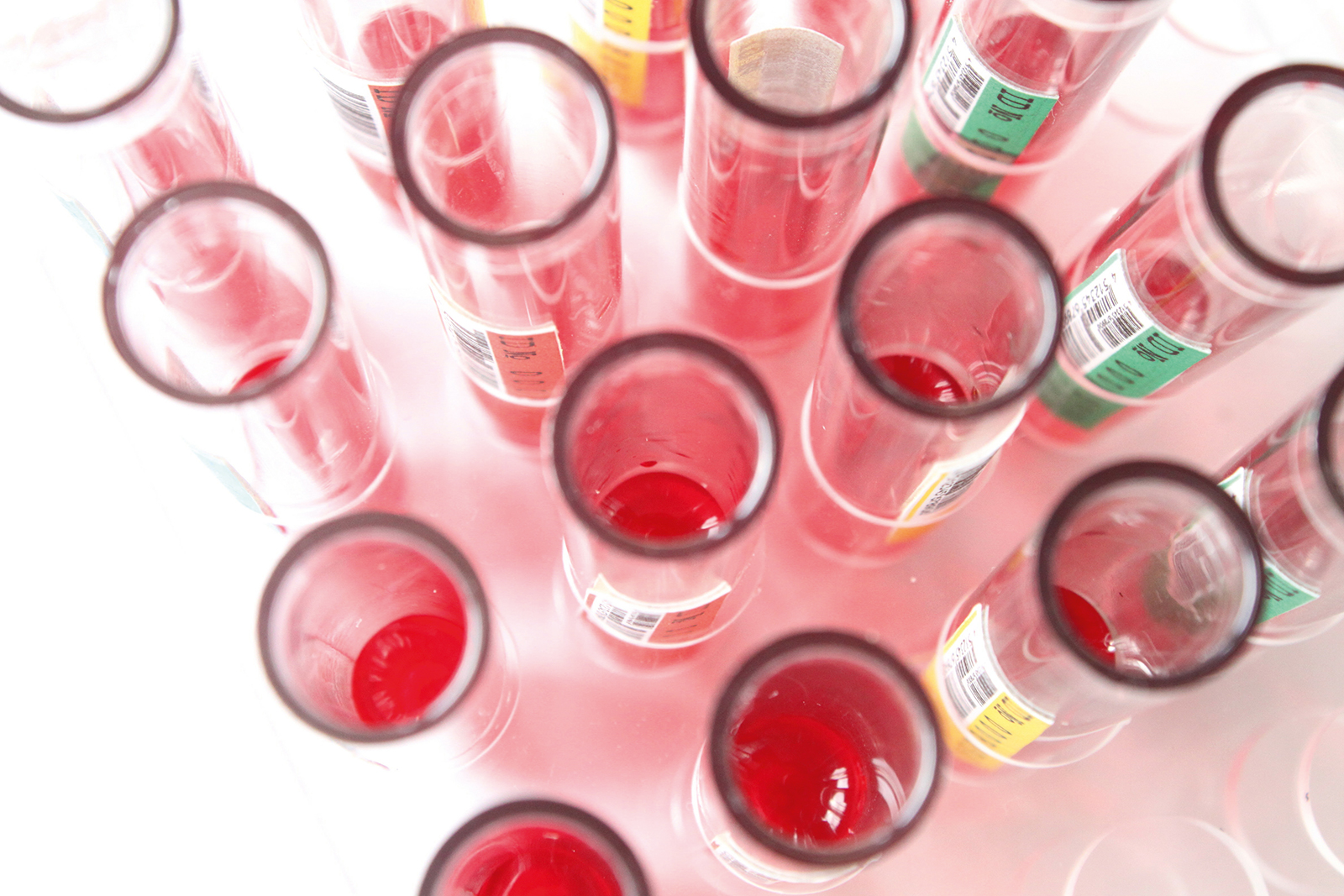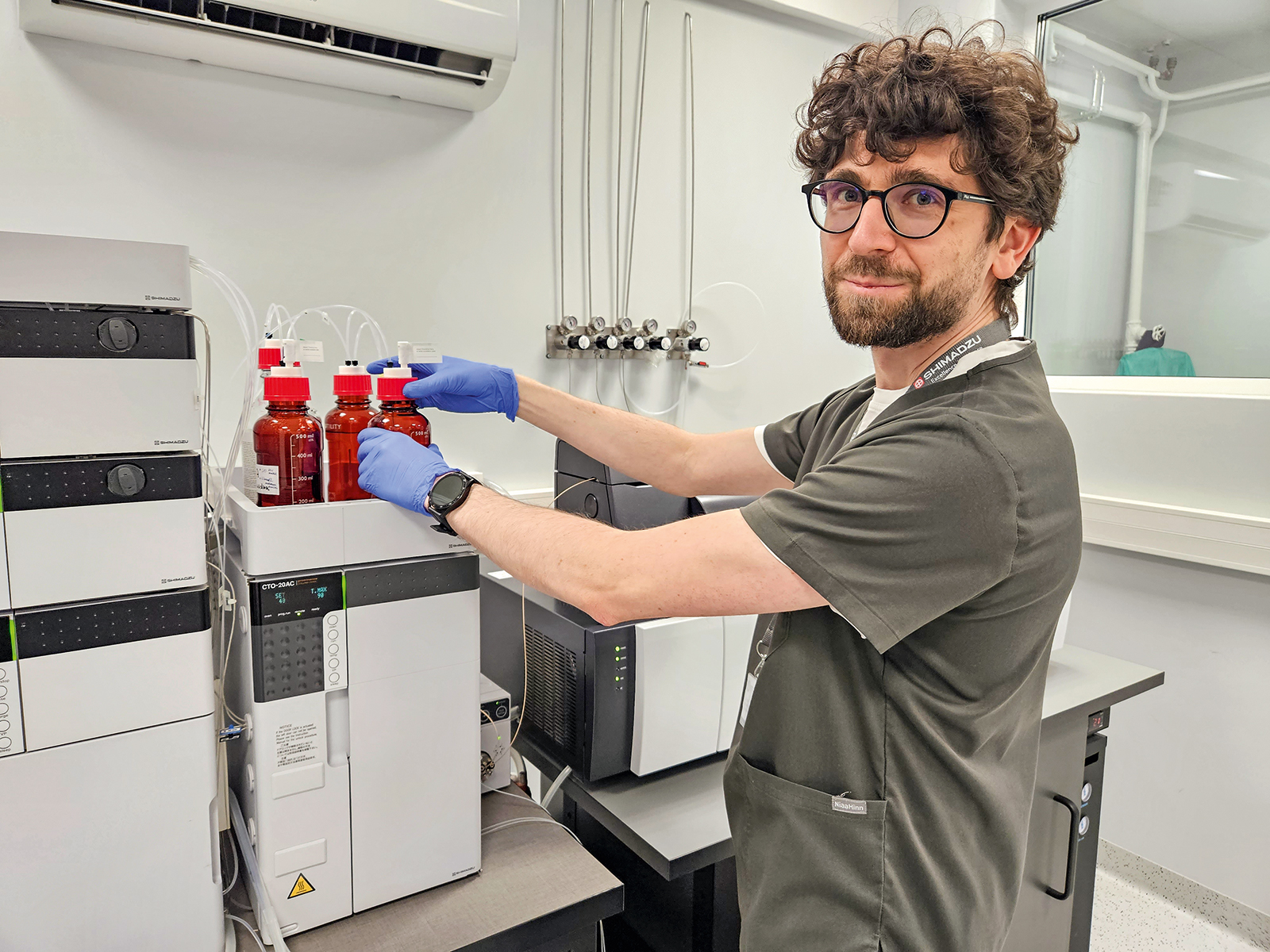Helping doctors more quickly treat hospital patients
Mass spectrometry is rapidly moving from research to real-life assistance at medical diagnostic labs
University Clinical Hospital in Opole
Until recently, mass spectrometry (MS) has primarily been associated with highly specialized research and university laboratories. These days, however, it is increasingly saving time and adding precision to the field of medical diagnostics – serving real-life patients and their doctors.
Mass spectrometry offers the additional advantage of allowing for the study of not only basic substances but also their metabolites and is increasingly employed in the clinical identification of microorganisms and in tissue imaging in oncology. And, thanks to its ultra-high measurement sensitivity and precision selectivity and resolution, it is now the technique of choice in the routine analysis of blood, urine, physiological fluids, saliva and even hair. Secrets of Science recently spoke with an expert in medical diagnostics about the advantages of MS in his daily work.
Science needs scientists, and the University Clinical Hospital (Uniwersytecki Szpital Kliniczny – USK) in Opole, Poland, has many of them. Among them are several specialists in medical laboratory diagnostics working at the Department of Laboratory Diagnostics, including: Ewa Gawrylak-Dryja, MSc, head of the department, Maria Przystajko, MSc and Tomasz Czerner, MSc – currently specializing in Laboratory Medical Toxicology. We asked Tomasz Czerner to tell us a bit about the lab:

Shimadzu: Good morning. What can you tell us about the University Clinical Hospital?
Tomasz Czerner: Good morning to you! The University Clinical Hospital (USK) is an independent public healthcare facility. The aim of USK is to provide health services, promote better health and carry out teaching and research as well as develop and deploy advanced modern medical diagnostics. We are a big multi-specialty hospital, operating 24 hours a day. We run the only trauma center in the Opolskie Voivodeship (Province) as well as the regional ECMO center (extracorporeal membrane oxygenation – a type of artificial life support). We provide our patients with a broad spectrum of treatments on the basis of an agreement with the Polish National Health Fund. As a result, we treat about 250,000 patients every year!

Diagnostics: Maria Przystajko, Tomasz Czerner
Shimadzu: That’s a lot! Can you say more about USK’s areas of specialization?
Tomasz Czerner: The hospital is active in most of the medical service specialties, cooperating with and participating in a number of national and international organizations for the promotion of healthcare in particular areas. For example, our Center for Pediatric Diabetes belongs to the International Society for Pediatric and Adolescent Diabetes (ISPAD) as well as to the SWEET initiative (an international network for pediatric diabetes centers to reduce inequalities in access to and quality of pediatric diabetes care) as part of its research into diabetes in children, adolescents and young adults. And our Allergy Center belongs to the international network GA²LEN (Global Allergy and Asthma European Network) Urticaria Centers of Reference and Excellence (UCARE).
Shimadzu: That sounds impressive! Now, what can you tell us about your actual part of that: the diagnostic facilities and labs?
Tomasz Czerner: Our Laboratory Diagnostics Department has one of the largest laboratories in Poland! Naturally, we use all of the traditional analytical techniques in our work. But several years ago, we realized that we needed to implement more cutting-edge separation techniques such as gas chromatography (GC) and high-performance liquid chromatography (HPLC) coupled with tandem mass spectrometry (MS).
Diagnostics: Maria Przystajko, Tomasz Czerner
Shimadzu: Why did you do that?
Tomasz Czerner: Of course, the traditional techniques worked better than the ones they replaced. However, they still weren’t always precise enough. And they sometimes produced cross-reactions as well as a multitude of false positive or negative results. These drawbacks led the entire medical field to look for new solutions offering better results. Mass spectrometry turned out to be such a solution.
Shimadzu: But surely MS has been around for a while? What was holding you back?
Tomasz Czerner: A good question! Yes, techniques like GC-MS and LC-MS are not completely new and are used extensively in research. But it has only been recently that clinical labs have started to realize how beneficial these techniques can be in routine testing. LC-MS, for example, improves the sensitivity of diagnostic testing, disease screening and therapeutic drug monitoring.
Shimadzu: That sounds important.
Tomasz Czerner: In a hospital, it is very important! And it also gives labs like ours the ability to both reduce costs and to more rapidly provide doctors and patients with much-needed test results.
Shimadzu: That sounds like a win-win situation for everyone! So methods are important, right?
Tomasz Czerner: Indeed they are. Like most scientists, we place great emphasis on achieving the highest quality of certainty in our work and research and want to use the best means available. We rigorously ensure that our procedures are compliant with the latest requirements.
So-called consumables are helpful in that regard. That is why in most tests we use ready-made kits with IVD certificates, preferably IVDR. We use solutions from many manufacturers of reagents and kits, including Chromsystems and RECIPE. For instance, all CE-IVD-marked RECIPE products comply with IVD Directive 98/78/EC (IVDD), which was recently repealed by IVD Regulation EU 2017/746 (IVDR, In Vitro Diagnostic Medical Device Regulation). Shimadzu application notes or ready-to-use method packages are also of great help to us, but in most cases we use ready-to-use complete LC-MS/MS kits such as antibiotics in plasma, steroids in serum, vitamin B1, B2 in whole blood, vitamin B6 in plasma, free metanephrines in plasma, immunosuppressants in whole blood, etc. We generally try to respond to the current needs of our patients and work closely with our doctors to listen to their needs.

Shimadzu: RECIPE works closely with Shimadzu, I believe.
Tomasz Czerner: Yes, I believe that is correct.
Shimadzu: All of that is really interesting. Can you give me a recent example of your lab at work?
Tomasz Czerner: Sure. We were asked by some of our doctors about the possibility of determining statins in human blood plasma. Statins, by the way, are lipid-lowering agents.
Shimadzu: Tell me more. Are these natural or synthetic drugs? And where do they come from?
Tomasz Czerner: If I remember correctly, the story begins with mevastatin. It was the first substance with properties that lowered cholesterol and LDL lipoprotein and was isolated from the fungus Penicillium citrinum in 1973 by Japanese biochemist Akira Endō. Then, in 1979, Endō patented the first statin: monacolin K obtained from the mold Monascus ruber. Later, studies proved that monacolin K and mevinolin are the same compound: Their current name is lovastatin.
Shimadzu: Do we know the mechanism of action of statins?
Tomasz Czerner: Yes. There is a great deal of literature written about that. Its mechanism of action involves the competitive inhibition of the enzyme 3-hydroxy-3-methylglutaryl-coenzyme-A reductase, which is a rate-limiting enzyme in the biosynthetic pathway for cholesterol production in the liver. So statins lower the level of total cholesterol, the LDL fraction and triglycerides and cause a slight increase in the HDL fraction. This action consists of limiting the production of cholesterol by inhibiting the activity of the enzyme responsible for its production in liver cells. Additionally, statins prevent the rupture of atherosclerotic plaque, reduce inflammation of the vessel walls, improve endothelial function, facilitate the dissolution of clots and have an antithrombotic effect. To sum it up, these drugs are useful in preventing coronary artery disease as well as in inhibiting its development and reducing complications related to atherosclerosis, such as heart attack or stroke. Statins also prevent the recurrence of these complications.
Shimadzu: That sounds good. But are statins dangerous at all?
Tomasz Czerner: Not necessarily, but we should check their status in the body. Please remember that some statins occur in nature, e.g. in the edible oyster mushroom, and also in fermented red rice. Currently, natural and synthetic statins are used to treat excessively high cholesterol levels. We can mention here, for example, several natural statins. This group includes lovastatin, pravastatin and simvastatin. Of the synthetic ones, it is worth mentioning atrovastatin, fluvastatin and rosuvastatin.
Shimadzu: Is there anything patients should especially remember when taking statins?
Tomasz Czerner: Absolutely. It should be remembered that while taking statins, a low-cholesterol diet should be adhered to. In addition, statins should not be administered to patients who are allergic to statins, or to children under 8 years of age, pregnant or breast-feeding women, or to patients with active or chronic liver failure. And the decision to administer this medication should always be made by a doctor.
Shimadzu: I believe you are using a new method in testing statins in your laboratory? How did that come about?
Tomasz Czerner: To put it simply, we had a problem and needed a solution. As I said, our doctors – a lot of doctors! – were increasingly asking us to test for the determination of statins in plasma samples. The conventional analyzers that we had did not allow for such determinations, and it was beginning to feel overwhelming. In desperation, we mentioned this to our friends at SHIM-POL, who are the exclusive representatives of Shimadzu in Poland. They sent over an expert to spend the day with us observing and asking questions. A few days later, SHIM-POL made some suggestions for how we could overcome the challenges we faced. I took those ideas back to my colleagues, and we liked what we saw …
Shimadzu: What did you like?
Tomasz Czerner: We realized that the only truly sensible technique for such difficult analyses is mass spectrometry. As luck would have it, we had had the answer for years, sitting right under our noses! Specifically, we used our ultra-high performance liquid chromatograph Nexera X2, coupled to an LCMS-8050 mass spectrometer with UFMS technology. Using the combined talents of these instruments, we were able to achieve high resolution and selectivity and, above all, high sensitivity in detecting and fully quantifying several statins in plasma samples from our patients. This significantly streamlined the process of diagnosis and treatment of our patients.
Shimadzu: With your new solution, how many statins were you able to test for? Did you also determine their metabolites?
Tomasz Czerner: Together with the experts from SHIM-POL, we were able to determine four statins in plasma and their metabolites. The analysis took less than 10 minutes! We then spent several days on optimization. That was not always easy, but in the end we were more than fully satisfied with the outcome. And we are even discussing how we can shorten the analysis time even further. Because for both our patients and our doctors, time is very valuable!

Shimadzu: Do you also use ready-to-use IVDR kits to save more time in determining statins?
Tomasz Czerner: Unfortunately not. There simply aren’t a lot of suitable kits on the market yet. But as “necessity is the mother of invention”, we decided to conduct a thorough literature review ourselves to optimize and validate our own in-house analytical method.
Shimadzu: I would expect nothing less from you! Tell me: What are your most important goals for the coming years?
Tomasz Czerner: Time will tell. Our team is developing dynamically and we hope to significantly expand the profile of our research. For instance, we are thinking a lot about the determination of antiepileptic drugs in serum and steroids in plasma. And we naturally intend to deepen our knowledge of MS with the aim of implementing further methods using this advanced technique.
Shimadzu: Do you face any obstacles to achieving your goals?
Tomasz Czerner: Only that we have a huge amount of daily work to do! But we have a solution for that, too. We would like to add another HPLC instrument to our laboratory to increase our capacity – some of our existing instrumentation is simply too slow!
Shimadzu: What did you like?
Tomasz Czerner: We realized that the only truly sensible technique for such difficult analyses is mass spectrometry. As luck would have it, we had had the answer for years, sitting right under our noses! Specifically, we used our ultra-high performance liquid chromatograph Nexera X2, coupled to an LCMS-8050 mass spectrometer with UFMS technology. Using the combined talents of these instruments, we were able to achieve high resolution and selectivity and, above all, high sensitivity in detecting and fully quantifying several statins in plasma samples from our patients. This significantly streamlined the process of diagnosis and treatment of our patients.
Shimadzu: With your new solution, how many statins were you able to test for? Did you also determine their metabolites?
Tomasz Czerner: Together with the experts from SHIM-POL, we were able to determine four statins in plasma and their metabolites. The analysis took less than 10 minutes! We then spent several days on optimization. That was not always easy, but in the end we were more than fully satisfied with the outcome. And we are even discussing how we can shorten the analysis time even further. Because for both our patients and our doctors, time is very valuable!

Shimadzu: Any final words of wisdom to offer?
Tomasz Czerner: Only to repeat that the use of mass spectrometry in clinical medicine is a rapidly evolving technique that offers lower (i.e. more precise) detection capabilities as well as excellent identification of compounds in a very short period of time. Altogether, this means that we can do faster and more detailed work, which allows clinicians to make better decisions and to provide quicker treatment regimens for our patients. Shimadzu’s promise for the future is that we can use a sample with a single drop of blood to quickly identity hundreds of clinical markers for disease!
Shimadzu: Thank you very much for your time and for your insights from the front lines of healthcare.
Tomasz Czerner: It was a pleasure!
The long tail of innovation
We often think about innovation as a singular moment: something new or better or faster is suddenly created, and that’s the important part. In reality, innovation is only the beginning. It needs to be used and, through that process, its benefits fully understood. Often, the potential applications of an innovation extend well beyond the original rationale or purpose of its conception.
In the case of mass spectrometry – already a go-to method for research labs around the world – the ability of people like the dedicated staff at USK’s Department of Laboratory Diagnostics to adapt, utilize and continue to probe the potential of this innovative tool is impressive. And to do it in direct service to medical patients and practitioners is inspiring. Shimadzu is proud to play a role in their vital work by providing tools and expertise that allow them to follow their curiosity wherever it may lead.